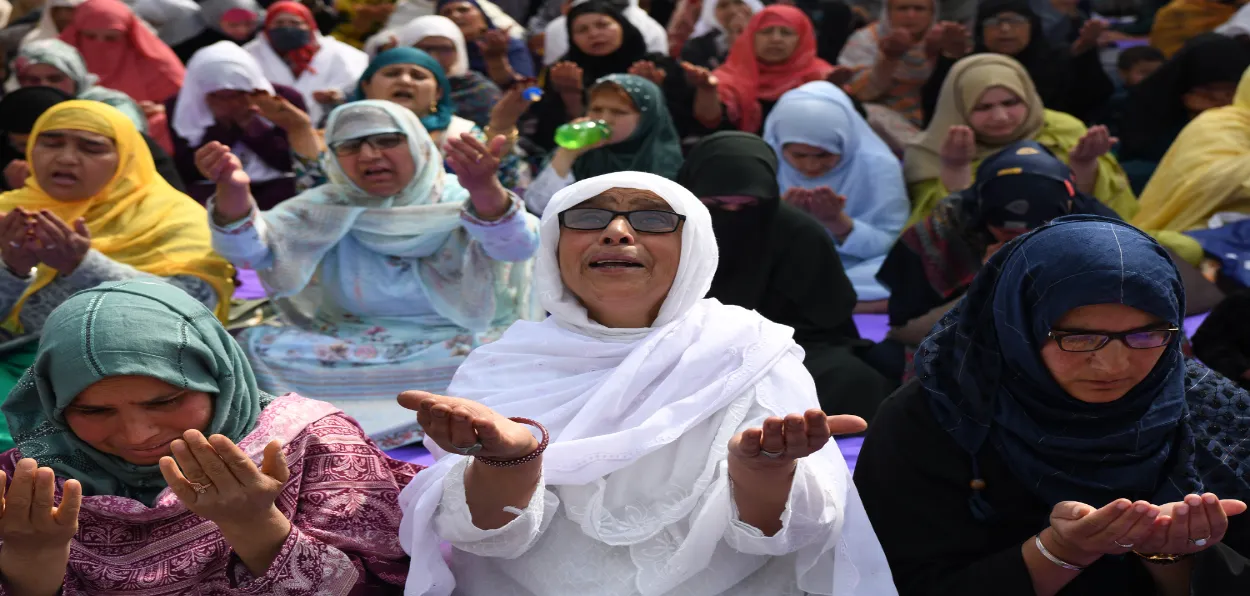
Amir Suhail Wani
The life and teachings of the Prophet and the Quran demonstrate Islam's inclusive, merciful, and compassionate nature. We come across incidents from the life of Prophet Muhammad where he not only embraced the marginalized and oppressed but his enemies and the enemies of Islam too. This tradition has lately waned, and as a result, we see a stark and ugly ideology in the guise of Islam that espouses exclusion. A mosque is at the center of Islamic society and religion.
The mosquse aren’t simply sacred spaces for worship, but importantly, they function as indispensable social institutions within Islamic society and have many social responsibilities. Sadly, of late Mosques are turning more exclusive, closing their doors, literally as well as symbolically, to those who otherwise need these spaces the most.
A halo of hollow piety and misplaced religiosity has turned spaces of inclusion into spaces of exclusion, thereby violating the very essence of Mosques and demeaning their importance in Muslim societies.
The Quran describes the Prophet as one who cleanses people’s hearts of filth, removes impurities from their souls, and, teaches them the book - the Quran. This means that the responsibility of the men of the pulpit (Maulanas) isn’t only to dispense, like a machine, the subtleties of religion to people; they are supposed to act as role models. This is possible only when our preachers are ready to accept humans as humans with all their fallacies and shortcomings. It is very much antithetical to the spirit of Islam to engage in “moral profiling” and ignore those who do not fit into these profiles.
They must, instead open their hearts for those who need the support and guidance to turn to their creator. The present culture of exclusion has had a regressive impact on youth’s engagement with religion. It hardens their behaviour and some of them end up messing their lives.
This is not merely a hypothetical construct, but a real-life issue that often plays out in society. It is nobody’s prerogative to enumerate the criteria for inclusion or exclusion and classify people into either of these groups. The only acceptable attitude for a preacher (Da’ee) is to leave open all portals of mercy. The transformation that the Prophet ushered by embracing those who were otherwise not eligible for the same initiated one of the greatest revolutions in human history.
A historian has described the companions of the Prophet as a “nursery of heroes” but in the pre-Islamic era, they appear to be no more than ordinary tribesmen, at perpetual war with one another. Thus, Islam has the power to transform ordinary humans into paragons of virtue. It is not the Islamic way to classify people into pious and wicked and prefer the former over the latter for transformation. This should be an eye-opener to those religious men of our times who behave otherwise.
The last century has seen the emergence of various movements in Islam that seek inclusion for salvation. These turned mosques into inclusive, participatory, and liberating spaces. This way the Mosques restored a semblance of social functions and cultural dynamism. However, the flip side of these movements was that like their predecessors, they paid little or no attention to gender inclusion and left half of the population out of the mosques.
The fact that Islam rose as an emancipatory and inclusive movement, embracing all diversities of caste, creed, gender, geography, and ethnicity. It’s over a period that Muslims started ignoring these bright aspects of their religion. Instead, they became obsessed with issues of little importance over the compassionate and ever-embracing aspects of religion.
It is always possible that the religion that inherently harbours inclusion, equality, social dynamism, and cultural compatibility will rise and reassert again. However, this path to liberating praxis is beset with ignorance of the fundamental and essential teachings of religion both on the part of scholars and the youth. Our scholars may be well versed in the traditional sciences but they are unaware of the challenges thrown by the modernity at their religion. The young generation raised in modern academia is condescending about religion.
ALSO READ: LSR alumna Iqra Hasan aspires to make it to Lok Sabha, carry her family legacy
This bilateral ignorance has widened the gulf between the youth and the scholars, bringing them at loggerheads. The way to bridge this gap lies in revisiting both religious and secular education. The path to reconciliation and inclusion has to pass through the meadows of learning and understanding.
